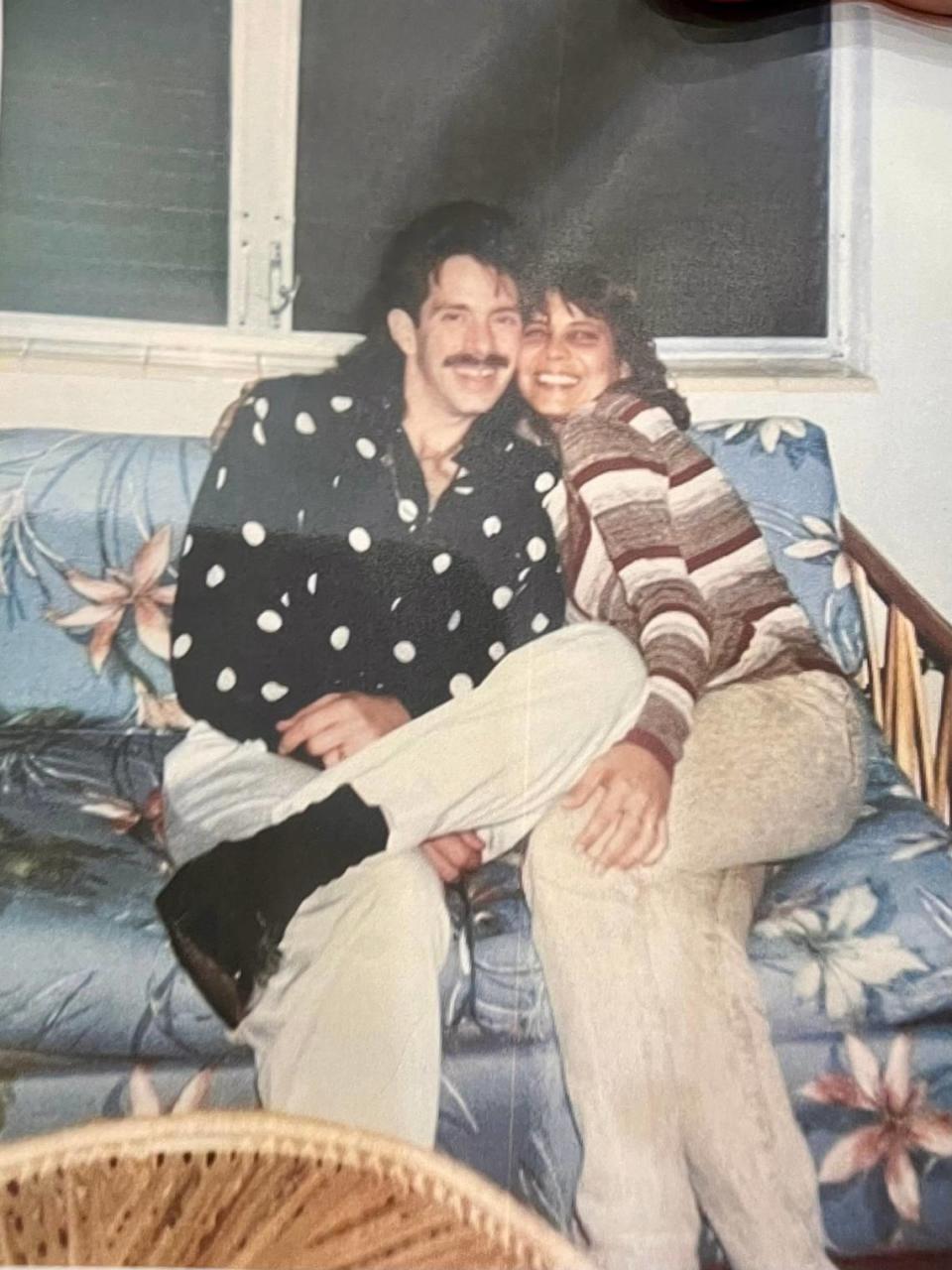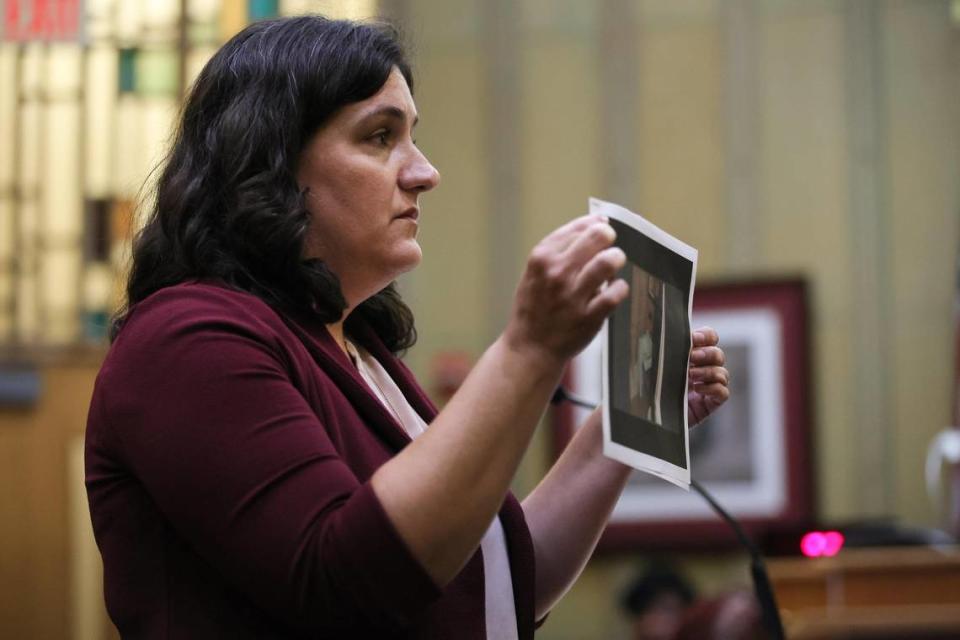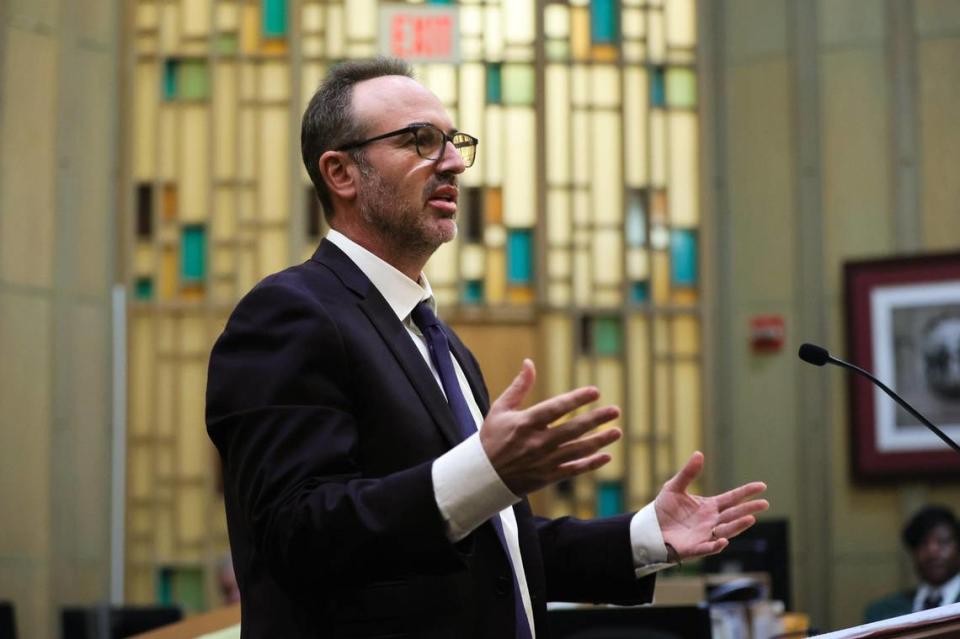Was he the well-dressed man who killed a woman, raped her friend in 1990? Jury will decide
The identity of a sharply dressed man who forced his way inside of a Miami Beach apartment and gunned down a woman before raping her friend in 1990 was a mystery for decades.
Prosecutors say the briefcase-wielding man was 60-year-old Dale Ewers. Defense attorneys argue that evidence doesn’t identify Ewers as the culprit.
Now, it’s up for a jury to decide his fate.
Ewers’ trial for the Sept. 21, 1990 murder of 34-year-old Mercedes Perez began Monday before Miami-Dade Circuit Court Judge Marisa Tinkler Mendez. Ewers is charged with first-degree murder, sexual battery and kidnapping.
While facing jurors, prosecutor Natalie Snyder detailed the man’s every move in the apartment.
Perez had recently moved to Miami-Dade from Cuba at the time of her murder. She lived in a modest one-bedroom apartment with few furnishings.
But her hopes for a new beginning was cut short when she was shot and killed by the defendant, Snyder said while pointing at Ewers.

30 fingerprints, DNA and a towel
At around 1 p.m., Perez and her friend were inside the apartment when they heard a knock at the door, Snyder said. Perez answered as her friend went to get dressed. That’s when the man, who had asked for the phone number of the complex’s manager, forced his way inside — shooting Perez at point-blank range.
He shoved Perez’s friend into a closet, where he tied her mouth with a shirt and blindfolded her with a dress, Snyder said. He then dragged her to the bathroom and raped her. After some time, the man ordered her to wipe herself with a white towel before locking her in a closet and fleeing.
When police responded to the apartment, they spoke to Perez’s friend and gathered evidence, including the towel. But there was “little else they could do,” Snyder said, because she didn’t know who the man was.

The case remained unsolved for decades — until technology evolved to the point it could identify people from DNA, Snyder said. In 2010, a Miami Beach cold case detective reviewed the file and sent the towel to Miami-Dade police’s crime laboratory for testing.
The semen found on it was linked back to Ewers, the prosecutor said. Perez’s friend then identified Ewers — a “face she could never forget” — out of a photo lineup.
“DNA doesn’t forget,” Snyder said. “And in this case, DNA solved a mystery.”
Defense attorney Harris Gilbert held up a blank sheet of paper while pacing before the jury. He told jurors they would have to draft a list to weigh the evidence in the case, considering any reasonable doubt.
The main issue with prosecutors’ case, Gilbert said, is the lack of evidence tied to Ewers. The lead detective collected a lot of evidence, including 30 fingerprints, with no link to Ewers. The only one, he said, was the towel.

Gilbert cast doubt on the accounts from Perez’s friend, who he said wasn’t ruled out as a suspect at the time of the killing. The woman had been in a romantic relationship with Perez and identified different men to police as the killer on at least two separate occasions, he said.
Testing concluded Ewers’ DNA was present on the towel, Gilbert said, but there was no DNA matching the woman, even though her DNA profile should appear if she wiped herself with it. Gilbert offered jurors an alternate explanation: that the towel might have been mixed up on a laundry day as the building had a shared laundry room for all units.
“After you’ve gone through the evidence, gone through the whole book, ...you’re going to find reasonable doubt as to the identity of Dale Ewers,” Gilbert said.
Victim’s friend takes the stand
Perez’s friend, whom the Miami Herald isn’t naming because she was a victim of sexual assault, detailed on Monday how she saw “Mercy” get shot to death before her eyes. Her testimony was translated from Spanish through an courtroom interpreter.
The 61-year-old said she and Perez were lifelong friends who grew up in the same area of Havana. They dated for five-and-a-half years during their youth but broke up because Perez moved to another town.
In between heavy breaths, she described the well-dressed attacker whipped a gun out of his briefcase before pointing it at her and Perez. She sniffled as prosecutors showed her the striped dress the man used to blindfold her.

The woman testified that after she was raped by the man, he asked for money — and threatened her. When he finally left, a neighbor helped her call 911.
“If you say something about me, I’m going to return and kill you,” she recalled the man telling her.
Since the sexual assault, she said she hasn’t been able to live alone or go out on her own without constantly looking over her shoulder.
“I saw him everywhere,” she said.

